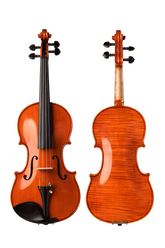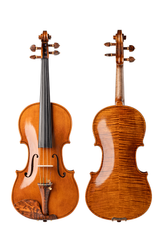How to Choose and Care for a Violin Bow?
Looking for the perfect violin bow? Here’s your complete guide to materials, performance features, care tips, and what makes a bow truly great — brought to you by Fiddlover Violin Shop.
🎯 Why the Right Bow Makes a Big Difference
Whether you’re just starting your violin journey or playing advanced repertoire, the quality of your violin bow has a huge impact on sound production, articulation, and overall playing comfort. A good bow supports clean tone, smooth bow changes, and expressive control.
🌳 Violin Bow Materials Explained
Violin bows are crafted from hardwoods that offer varying levels of flexibility and durability:
- Pernambuco – Premium wood used for professional-grade bows. Offers great strength, responsiveness, and tone.
- Brazilwood – More affordable, commonly used for beginner and intermediate bows.
- Other woods – Such as snakewood or ironwood, used for entry-level or decorative bows.
The bow hair is made of natural horsehair, usually from Mongolia or Siberia, with around 180–220 strands per bow.
🛠 Common Issues & Maintenance Tips
Even high-quality wooden bows require occasional care. Here are some common problems and how to handle them:
- Warping: Slight warping can often be corrected by a professional using gentle heat straightening.
- Broken stick or head: Depending on the damage and value of the bow, repairs can be done with splicing or tip replacement.
- Loose horsehair: If the bow hair slips out or becomes too long to tighten, it’s time for rehairing.
🔁 When and How to Rehair a Violin Bow
Most players should rehair their violin bow every 6 to 12 months, depending on use. Rehairing involves:
- Preparing 180–220 clean, even horsehairs
- Installing one end into the frog, securing it with a wedge
- Measuring the correct length, tying off the other end
- Mounting it into the bow head and trimming excess
While it’s possible to rehair your own bow with practice, we recommend having it done by a trained luthier or bow technician for the best results.
🧰 Additional Bow Maintenance Tips
- Loosen the bow hair after each use to maintain springiness
- Store your bow in a protective case to avoid accidental damage
- Avoid touching the horsehair with your fingers
- Apply rosin regularly to keep the hair grippy
- Use a drop of oil if the screw becomes difficult to turn
🎯 Find the Right Violin Bow at Fiddlover
At Fiddlover Violin Shop, we offer hand-selected bows for every level:
- Beginner bows: Affordable, lightweight, and responsive
- Intermediate bows: Better balance, stronger materials, improved tone
- Professional bows: Made from Pernambuco wood, offering premium quality and performance
🎻 Browse our full violin bow collection here »
💡 Final Thoughts
Choosing the right violin bow and taking good care of it will elevate your playing and extend the bow’s lifespan. At Fiddlover, we’re passionate about helping musicians find the tools that inspire their best performances. Have questions or need help picking a bow? Contact us anytime — we’re happy to help!





